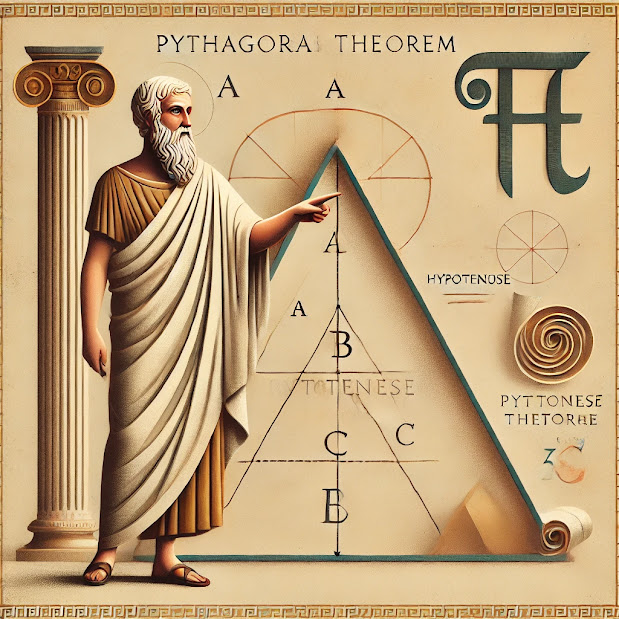The History of Mathematics
The History of Mathematics
The history of mathematics is one of the oldest and most fascinating fields in human history. Mathematics has evolved alongside the development of civilizations and has become a fundamental science that shapes humanity’s knowledge. In this article, we will examine the development of mathematics from its origins to modern times.
1. The First Traces of Mathematics: Ancient Civilizations
The origins of mathematics date back to prehistoric times. The first mathematical traces emerged from humans' basic need for counting and their relationship with nature. Civilizations such as Mesopotamia, Egypt, and Ancient Greece laid the foundation for mathematical thinking.
Mesopotamia
One of the first serious applications of mathematics is found in Mesopotamia. Around 3000 BCE, the Sumerians wrote numbers on clay tablets. Mesopotamian mathematics was recorded using cuneiform and was often used in practical fields such as trade, construction, and astronomy. The Babylonians developed a base-60 numeral system, which is still used today in measuring time, angles, and astronomical calculations.
Egypt
In Ancient Egypt, mathematics was largely focused on geometry. The Egyptians used geometry to redefine land boundaries after the annual floods of the Nile River. The geometric knowledge used in the construction of the pyramids also shows how advanced Egyptian mathematics was. The Rhind Papyrus, dated around 1800 BCE, demonstrates how the Egyptians solved algebraic problems.
Ancient Greece
Ancient Greece is where mathematics developed as a systematic science. In the 6th century BCE, Pythagoras laid the foundation for mathematical theories. Pythagoras’ number theory and the Pythagorean Theorem are among the most important discoveries in the history of mathematics. Later, Euclid's work "Elements" systematically gathered the basic rules of geometry, forming the cornerstone of mathematics. This work remained the fundamental source of mathematical education for centuries.
2. Mathematics in the Middle Ages and the Islamic World
While the Middle Ages are considered a period of stagnation for mathematics in the Western world, this era was highly productive for mathematical work in the Islamic world. Islamic scholars translated, developed, and made advancements in ancient Greek mathematics.
The Islamic World and Algebra
Al-Khwarizmi, known as the father of algebra, was a 9th-century Islamic mathematician. His book "Al-Kitab al-Mukhtasar fi Hisab al-Jabr wal-Muqabala" is considered the first to introduce the concept of algebra. This work presented a systematic approach to solving equations and laid the foundations of modern algebra. Al-Khwarizmi’s work helped mathematics develop in both the Islamic world and later in the West.
Trigonometry and Astronomy
Islamic mathematicians also made significant contributions to trigonometry and astronomy. Nasir al-Din al-Tusi, who developed the works of Ptolemy, treated trigonometry as an independent discipline and formulated fundamental trigonometric rules such as the sine theorem. Additionally, astronomers like Ulugh Beg worked on observational astronomy and trigonometric calculations.
3. The Renaissance and the Rebirth of Mathematics
The Renaissance was a period of revival for science, art, and philosophy in the Western world. During this time, mathematics became extremely important in both scientific and artistic fields.
Italy and Leonardo Fibonacci
Fibonacci, an Italian mathematician who lived in the 13th century, introduced the Hindu-Arabic numeral system to the Western world. His work, "Liber Abaci," demonstrated the advantages of this numeral system for trade and calculations. He also introduced the sequence of numbers known as the Fibonacci sequence during this period.
Analytic Geometry and Descartes
In the 17th century, René Descartes developed analytic geometry. Descartes bridged geometry and algebra by expressing geometry with algebraic equations. This innovation paved the way for new approaches in other areas of mathematics.
4. The Birth of Modern Mathematics
The 18th and 19th centuries were periods in which the foundations of modern mathematics were established. During this time, major advancements were made in areas such as mathematical analysis, probability theory, and algebra.
Newton and Leibniz: Calculus
Isaac Newton and Gottfried Wilhelm Leibniz independently laid the foundations of calculus. Calculus provided a mathematical way to express concepts of motion and change. Newton's laws of motion and Leibniz's integral calculus became the building blocks of modern science.
Probability Theory
Probability theory was developed in the 17th century by Blaise Pascal and Pierre de Fermat. This theory, derived from gambling games, later became an important tool in fields such as statistics, economics, and physics. In the 19th century, Carl Friedrich Gauss advanced the field by developing probability distributions and the normal distribution.
5. The 20th Century and Beyond: Abstract Mathematics and Computer Science
The 20th century marked a period where mathematics shifted towards abstract thinking and computer science emerged. Mathematics became more integrated with physics, engineering, and computer science.
Abstract Mathematics and Group Theory
At the beginning of the 20th century, mathematicians began to focus on abstract mathematics. During this time, abstract fields such as group theory, ring theory, and topology were developed. These areas played a crucial role in forming the mathematical foundations of modern physics and contributed significantly to fields like quantum mechanics.
Computer Science and Mathematics
In the mid-20th century, computer science became closely intertwined with mathematics, leading to the development of algorithms, computation, and information theory. Alan Turing laid the foundations of computer science, establishing the mathematical principles behind modern computers and artificial intelligence.
Conclusion
The history of mathematics mirrors the history of humanity. From ancient times to modern times, mathematics has been a product of humanity's ability to understand the universe and solve problems. The development of mathematics has shaped not only scientific thought but also the evolution of civilizations. Today, mathematics continues to be an indispensable tool in both science and everyday life. In the future, it is inevitable that mathematics will continue to evolve with new discoveries and technological advancements.










.png)


Comments
Post a Comment